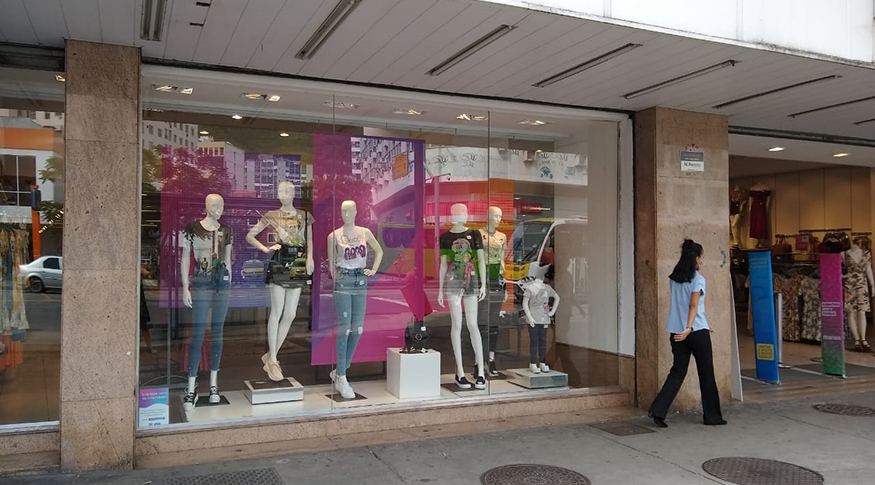Monthly Survey of Trade
Retail sales shrink 6.1% in December, but grow for the fourth year in a row
February 10, 2021 09h00 AM | Last Updated: February 11, 2021 10h42 AM

The volume of retail sales fell 6.1% in December compared to November, when it changed -0.1%. It is the most intense fall for a December in the time series, which started in 2000. Despite the negative results in the last two months of the year, the cumulative index in 2020 closed with a 1.2% increase. It is the fourth consecutive time that trade has increased annually: 2.1% in 2017; 2.3% in 2018 and 1.8% in 2019. With the decline of December, retail sales achieved the level of February, pre-pandemic period.
In the extended retail trade, which includes the activities of motor vehicles, motorcycles, parts and pieces and of construction material, the volume of sales in December decreased by 3.7% in relation to November and closed the year down by 1.5%, after three consecutive years of increases. Compared to December 2019, growth was 2.6%, the sixth consecutive positive rate in this analysis.
The data are from the Monthly Survey of Trade (PMC), released today (10), by the IBGE. The quarterly moving average of retail trade was -1.8%. In the comparison between December 2020 and December 2019, the result was an increase of 1.2%, the sixth consecutive positive rate in this type of comparison.
PMC's manager, Cristiano Santos, explains how the Covid-19 pandemic directly affected the survey result trends throughout the year. "The results of the survey tend to have minor changes, but with the pandemic, there was a different scenario, since we had two months (March and April) of very large falls," he says.
With this very low base of comparison, the result of the retail grew from May to October, when it presented the highest level of the time series, which started in January 2001, and exceeded the pre-pandemic level, of February. "The fall in December is a natural repositioning, since the level was very high with the results of October and November", adds the analyst.
Another influencing factor in the result in the last months of the year is food inflation. According to Mr. Santos, hypermarkets and supermarkets have a greater weight on PMC, almost half of the total result. “Whatever happens to them influences the survey a great deal. And, due to the recent results of the IPCA, the sales volume ended up being affected”, he justifies. The IPCA is the Extended Consumer Price Index, a monthly index produced by the IBGE to measure the country's official inflation.
The cumulative growth of retail trade in 2020 came after a first semester of decline (-3.2%) and a second semester of increase (5.1%). The expanded retail trade showed the same dynamics (-7.7% and 4.2%, respectively) but the result was not enough for the indicator to close the year with a positive rate.
All ten activities fall in December, but five close year on a high
All ten retail activities, including extended retail, closed December with a drop compared to November. Other articles of personal and domestic use fell 13.8%, while textiles, wearing apparel and footwear fell 13.3%. Office, computer and communication equipment and material (-6.8%), furniture and household appliances (-3.7%) and books, newspapers, magazines and stationery (-2.7%), in addition to pharmaceutical, medical, orthopedic articles, perfumery and cosmetics (-1.6%), fuels and lubricants (-1.5%) and hypermarkets, supermarkets, food products, beverages and tobacco (-0.3%) complete the retail trade. In the extended retail, the drop in motor vehicles, motorcycles, parts and pieces was 2.8% while in construction material, the drop was 1.8%.
The scenario is different in the cumulative value in 2020. Five sectors increased: Construction material (10.8%), furniture and household appliances (10.6%), pharmaceutical, medical, orthopedic articles, toiletries and cosmetics (8.3 %), hypermarkets, supermarkets, food products, beverages and tobacco (4.8%) and other personal and household articles (2.5%).
On the other hand, books, newspapers, magazines and stationery (-30.6%), textiles, wearing apparel and footwear (-22.7%), motor vehicles, motorcycles, parts and pieces (-13.7%), office, computer and communication material and equipment (-16.2%) and fuels and lubricants (-9.7%) closed the year in decline. “The activities had different dynamics during the year. Some were severely affected by the pandemic and by the stricter moments of isolation, such as wearing apparel and fuel. Others, on the other hand, benefited from more people at home, as construction material, or did not close at any time, as hypermarkets”, concludes Mr. Santos.




















